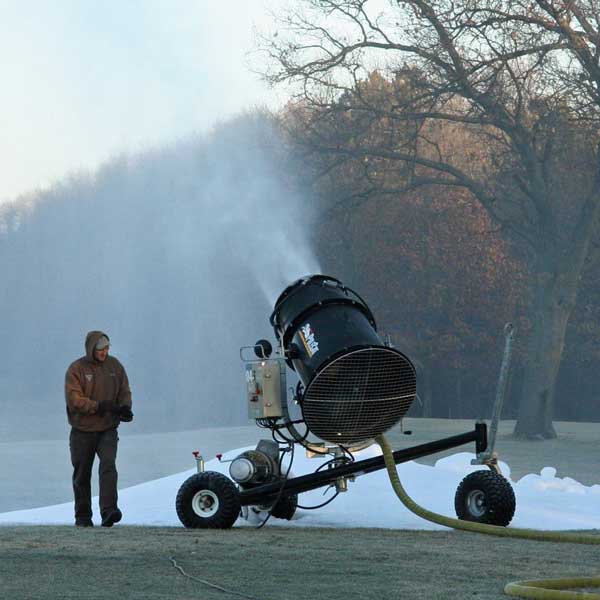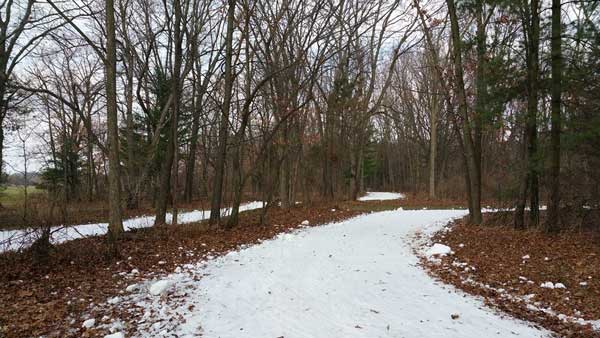
Waxing for artificial snow
Sun, Dec 14, 2014 - By Dan Meyer
With warmer weather forecasted this week, the man-made snow at Huron Meadows Metropark and the Cross Country Ski Headquarters may be the only snow around. It seemed appropriate to post something about waxing for artificial snow...
Dan Meyer is the founder of Fast Wax.
Artificial snow has a different makeup than natural snow and requires a slightly different approach to waxing. Artificial snow is a solid triangular block of ice and tends to be more abrasive than natural snow. Artificial snow can also vary from a fine new blown snow crystal to large abrasive transformed “icy” snow crystal.
In either case the Artificial snow is more abrasive than natural snow.

Snow-making for Huron Meadows Metropark's cross country ski trails
Ski Flex and Structure
The ski flex and structure for artificial snow are the most difficult to predict and are dependent on the grooming, and the amount of traffic on the trail (generally high). You will need to test ski flex and structure at the site for optimal performance.
For most conditions Fast Wax recommends a moderate ski flex with a little more structure than normal. A universal grind works well or for more humid conditions use the Finite Structure Tool Right-Left Swivel pattern or a light 0.3 mm broken pattern either will work.
Glide Wax
Fast Wax recommends using a glide wax one temperature range colder than indicated for the conditions. It is advisable to wax more frequently as artificial snow tends to wear the wax and bases faster than normal.
A good combination is a harder base layer than the top layer here is an example for 20 F conditions:
- Base Layer 1 to 2 layers Fast Wax HS 10 Teal
- Top Layer Fast Wax HSLF 20 Blue

Man-made snow is much more abrasive than natural snow.
Grip Wax
Grip wax will vary a little more depending on the how transitioned the snow is and how often the trail is groomed. With new blown snow most hard waxes will work well with an ironed in binder. When the snow has transitioned, iron in a klister binder and add a multigrade or universal klister as the grip wax.
Here are some recommended options:
- Iron in Rode Black Binder or Rex Power Grip Blue and top coat with Rode Multigrade grip wax.
- For transitioned snow, Iron in a Blue Klister and top coat with Rode Mulitgrade Klister. (The multigrade Klister should be applied almost as long as a normal wax pocket, generally about 1 inch shorter than normal front and back).
- For icy conditions use a Blue Klister binder and top coat with Rex OV ice klister. (In this type of condition use the normal klister pocket on the ski, shorten up on both the front and back by 2 to 3 inches of the kick zone).
